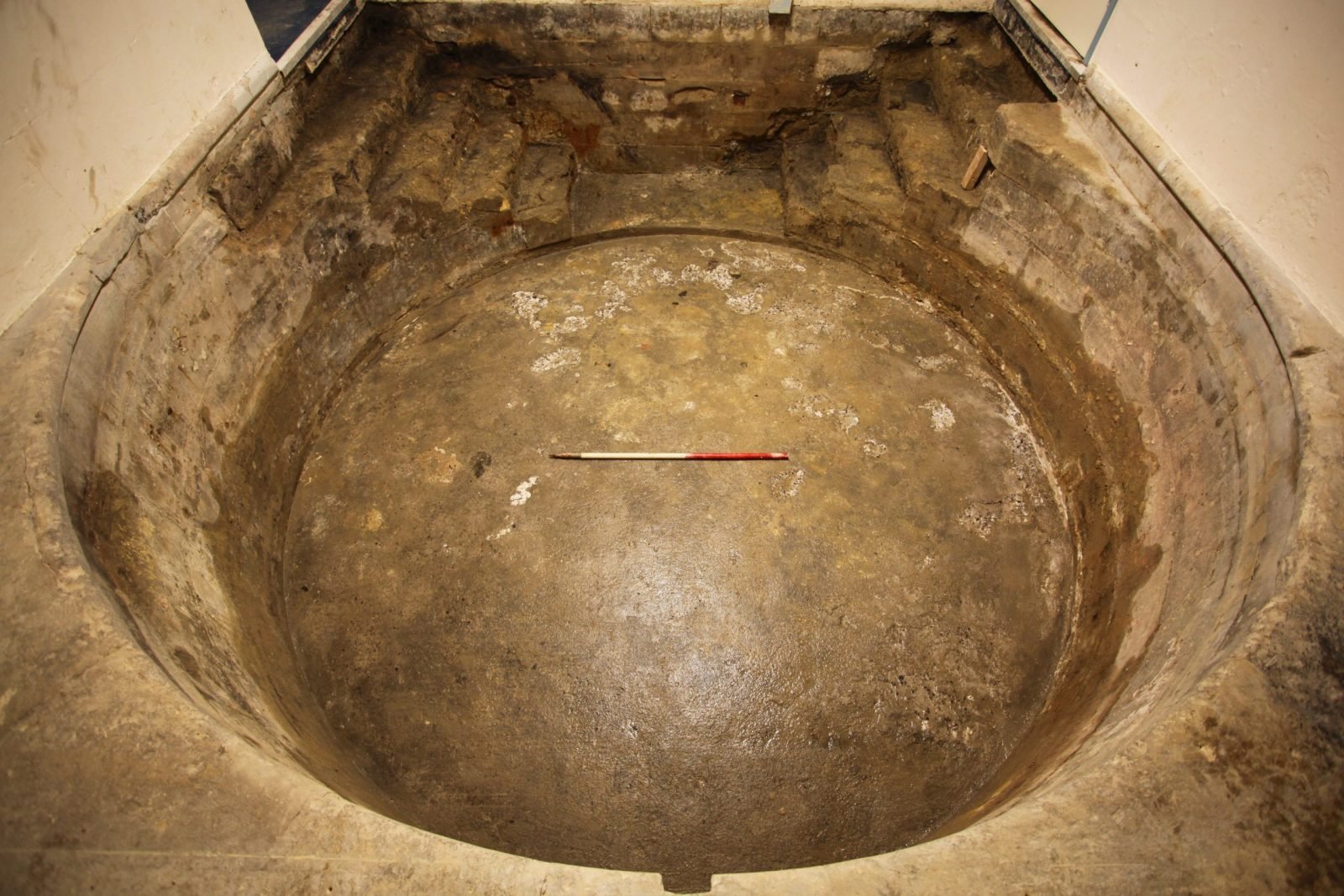
Today, the benefits of a cold plunge are extolled by wellness influencers and the practice is indulged in by professional athletes and health enthusiasts alike. There’s nothing new or singular to the practice. The Greeks, Romans, Nordics, and Japanese have all celebrated the virtues of embracing liquid cold. Likewise, beginning in the 18th century, British medical practitioners advised men and women that taking regular cold water dips was beneficial for physical and mental ailments.
The popularity of cold baths in Britain soared, and they quickly became a fixture in private country houses and urban public facilities alike. One such cold bath was located beneath the Bath Assembly Rooms in Bath, the U.K., and has recently been excavated by a team from Wessex Archaeology.
Alana Wright of the National Trust in the newly uncovered 18th-century cold bath. Photo courtesy National Trust/James Beck.
Assembly rooms became major social gathering places in 18th- and 19th-century British and Irish towns. Often open to members of both sexes, they offered a range of entertainment, including dancing and gambling. In Bath, a town in southwestern England known for its mineral waters since the time of the Romans, the National Trust is in the process of restoring the Bath Assembly Rooms to their former glory.
“There are many elements of this discovery that are still a mystery,” said Tatjana LeBoff, project curator from the National Trust. “The Cold Bath at the Assembly Rooms is highly unusual. It is a rare, if not unique, surviving example, and possibly it was the only one ever built in an assembly room.”
The location of the entrance to the cold bath. Photo courtesy National Trust.
Built between 1769 and 1771 by John Wood, the younger, the Bath Assembly Rooms offered spaces for relaxation, billiards, coffee drinking, gambling, balls, and concerts—essentially offering locals all of the fashionable leisure and entertainment activities of the day.
To reach the cold bath, which had a dressing room on either side, archaeologists removed several tons of rubble that had filled in the space. A floor had been laid on top of the pool, perhaps as early as the beginning of the 20th century. The archaeologists uncovered steps leading into the pool as well as a niche that would have been used to display a statue.
“Although historical records indicated that there was a cold bath buried beneath the Bath Assembly Rooms, we had no idea what preservation of the bath would be like,” said Bruce Eaton, an archaeologist at Wessex Archaeology. “The building suffered damage at the hands of the Luftwaffe and the rooms were remodeled in the late 20th century.”
More Trending Stories:
Revealed: The Major Mystery Consignors of New York’s Multi-Billion-Dollar Fall Auction Season
Christie’s Pulled Two Works by a Prominent Middle Eastern Artist From Sale After a Complaint